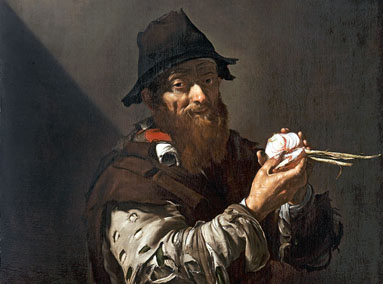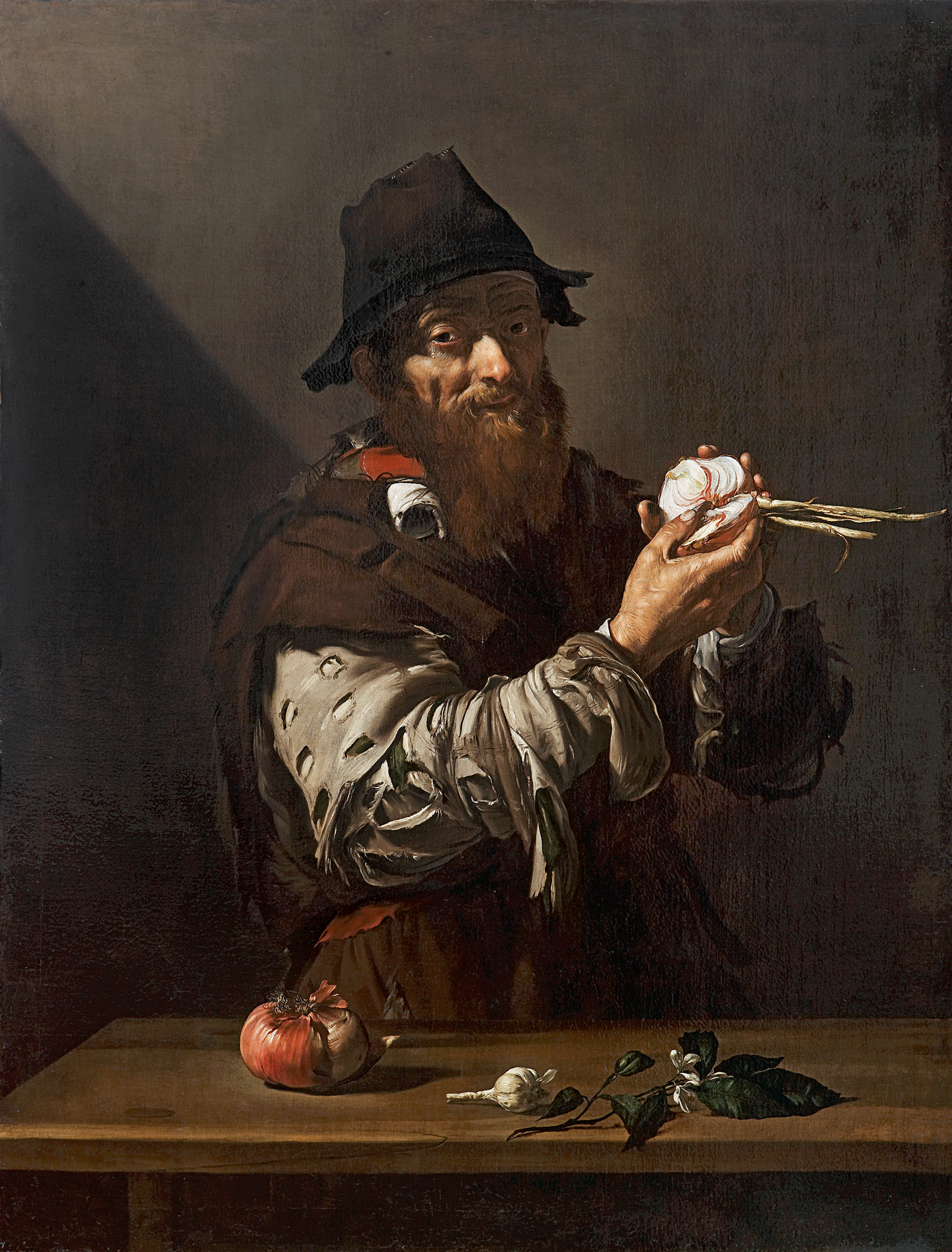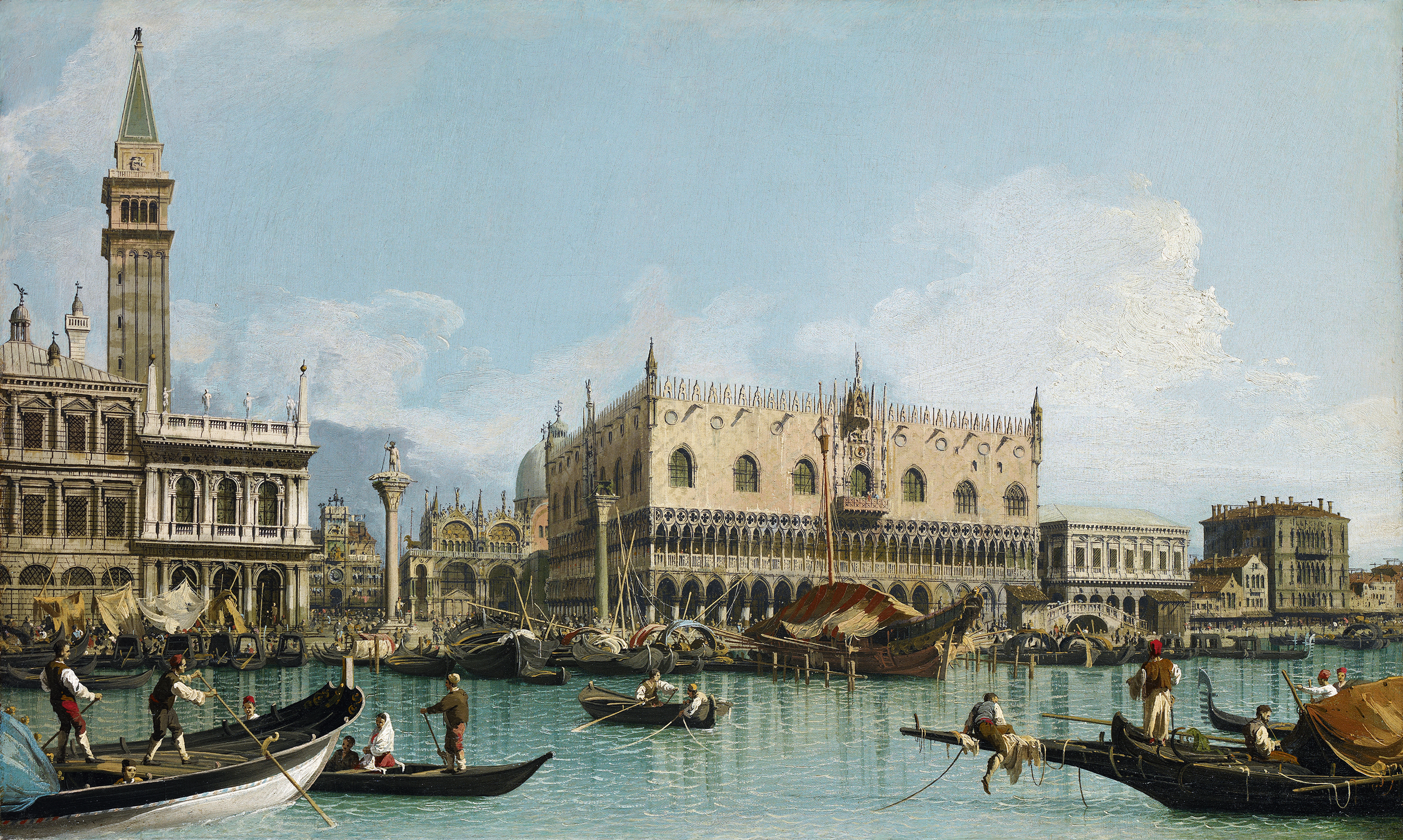First exhibition in U.S. of paintings from Juan Abelló Collection ends Aug. 2
The Abelló Collection at the Meadows Museum, featuring 500 years of art, ends soon.

The Meadows Museum at Southern Methodist University is featuring the first exhibition in the United States of paintings from the collection of Juan Abelló, who is considered one of the world’s top collectors.
 Jusepe de Ribera (Spanish, 1591-1652), The Sense of Smell, c. 1615. Oil on canvas. P73 – 11/1987, Archive Abelló Collection (Joaquín Cortés) |
The Abelló Collection: A Modern Taste for European Masters includes approximately 70 paintings spanning the 16th to the 21st centuries — displaying works by such Spanish masters as El Greco, Jusepe de Ribera, Francisco Goya, Salvador Dalí, and Pablo Picasso, as well as by other European artists including Georges Braque, Canaletto, Edgar Degas, Fernand Léger, Henri Matisse and Amedeo Modigliani, among others.
Francis Bacon’s Triptych 1983, one of the artist’s final works in this iconic format, is among the works on display. Also included are an ensemble of 15 drawings by Pablo Picasso, representing all periods in his long career.
The Abelló Collection: A Modern Taste for European Masters, joins the Meadows’ ongoing series of international partnerships that are bringing Spanish masterworks to the U.S. The exhibition is a cornerstone to the Museum’s 50th anniversary celebration, which continues throughout 2015.
Based in Madrid, Juan Abelló is one of Spain’s most prominent art collectors — and has been internationally recognized as one of the top 200 collectors in the world since he began collecting art over three decades ago. Along with his wife Anna Gamazo, Abelló has amassed more than 500 outstanding works of art spanning 500 years of European history.
The Abelló Collection is grounded in the couple’s dedication to bringing great national works of art back to Spain that have been dispersed over time in the turmoil resulting from centuries of political and economic strife — from the Napoleonic invasion, to numerous historical financial crises. Abelló’s collecting bears a parallel to that of Meadows Museum founder and SMU benefactor Algur H. Meadows, who similarly devoted his fortune to the collection, study, and presentation of Spanish masterworks, and to strengthening international awareness of Spain’s robust cultural tradition.
“The Meadows Museum is incredibly grateful for the generosity of Juan Abelló and Anna Gamazo, who have so graciously agreed to lend these extraordinary masterpieces from their collection for an international debut in Dallas,” said Mark A. Roglán, The Linda P. and William A. Custard Director of the Meadows Museum and Centennial Chair in the Meadows School of the Arts. “We are honored to have the opportunity to present for the first time in the United States paintings from this outstanding collection, which showcases Spain’s powerful artistic legacy, and perfectly coincides with our institution’s founding mission and role as a leader in the research and presentation of Spanish art.”
Exhibition Highlights
The Abelló Collection: A Modern Taste for European Masters has been curated by Almudena Ros de Barbero, curator of the Abelló Collection, who served previously at the Musee du Louvre working on the opening of the new Spanish picture galleries, and later was a researcher at the Wildenstein Institute in Paris. Some of the paintings that will be featured in the exhibition are presently on display in Madrid as part of a larger series of exhibitions mounted by the city, “Patronage in the Service of Art.” In conjunction with the exhibition, the Meadows produced a fully illustrated, English-language catalogue published by Ediciones El Viso.
Highlights of the Meadows Museum exhibition include:
- Baptism of Christ by Juan de Flandes (c. 1496-99), the central panel in an altarpiece (now dispersed) devoted to St. John the Baptist that was originally located at the Carthusian Monastery of Miraflores in Burgos, Spain. With the precise technique typical of members of the Flemish school, Flandes created a work of vibrant luminosity, depicting a unique moment during which all three persons of the Holy Trinity were manifest.
- The Stigmatization of Saint Francis by El Greco (c. 1580), the first version of several variations of the artist’s renderings of this subject, including a later depiction entitled Saint Francis Kneeling in Meditation (1605-1610) housed in the Meadows’ permanent collection. Created shortly after El Greco arrived in Toledo, the work from the Abelló collection will provide visitors an opportunity to compare the iconographical and stylistic differences between the two works, and observe the evolution of El Greco’s artistic practice.
- The Sense of Smell by Jusepe de Ribera (c. 1615), part of the Five Senses series the artist created for Giulio Mancini, a prominent art writer, collector, and dealer who served as physician to Pope Urban VIII. A follower of Caravaggio, Ribera spent the majority of his working life in Italy, where he was known as “Lo Spagnoletto” or the “Little Spaniard.” This piece is a rare example of the artist’s early Roman period prior to his departure for Naples in 1616, where he would settle for the remainder of his career.
- A pair of portraits by Francisco Goya depicting his son Javier’s father-in-law, Martin Miguel de Goicoechea, and Martin’s wife, Juana Galarza de Goicoechea (both 1810). The pair particularly resonates with the Meadows’ collection, which features portraits of the couple’s daughter, Gumersinda, and the artist’s son. Javier and Gumersinda gave Goya his only grandson, Mariano, whose portrait was acquired by the Museum in 2013. Together, these works will offer a comprehensive picture of the artist and his legacy.
- Two vedute (views) by Giovanni Antonio Canal “Canaletto,” with views from the Grand Canal of Venice dated c. 1720, the period when Canaletto was at the height of his powers. These paintings depict several emblematic buildings of Venice, including the Piazza San Marcos, Palazzo Ducale, Biblioteca Marcina, and the Palazzo Corner della Ca’ Granda or Palazzo Barbarigo.
- The Cellist by Amedeo Modigliani (1909), with a portrait of Constantin Brancusi, the artist’s close friend and neighbor on the reverse. Brancusi quickly became a crucial influence in Modigliani’s life and work, encouraging the artist to investigate Cycladic sculpture. Modigliani’s fascination with this ancient Aegean culture resulted in a particularly productive period of his career between 1909 and 1915, in which he produced a number of sculptures with monumental and simplified forms. The double-sided painting will be displayed alongside two preparatory drawings for The Cellist and The Brancusi Portrait.
- Rum and Guitar by Georges Braque (1918), one of the artist’s Cubist pictures painted in the aftermath of World War I, during which he was severely injured. Prior to the war’s outbreak in 1914, Braque and Picasso jointly established Analytic and Synthetic Cubism and collage, signaling a particularly innovative period of the movement that lead to Braque’s first solo exhibition in Paris in 1908. This piece reflects the reemergence of Cubism after the War, when it began to coalesce as a defined artistic movement.
- Nu assis (Seated Nude) by Pablo Picasso (c. 1922-23), a nearly monochromatic work executed by Picasso during a period when he returned to classicism—in this instance, referencing the iconography of Venus before the mirror. The linear strokes of charcoal outlining the figure and the thick application of white paint on bare canvas give the work volume and confer an almost sculptural quality.
- Triptych 1983 by Francis Bacon (1983), one of Bacon’s final works in this iconic format, which references both the popular Renaissance composition and the modern inventions of photography and cinema. The Abelló Collection houses an extensive repertoire of Bacon’s work, and Juan Abelló is the only Spanish collector who owns multiple pieces by the artist. Triptych 1983 serves as a capstone to the Meadows exhibition and the Abelló collection as a whole.
 Giovanni Antonio Canal, called “Canaletto” (Italian, 1697-1768), The Pier of Venice Next to St. Mark’s Square, c. 1729. Oil on canvas. P678 – 11/2002, Archive Abelló Collection (Joaquín Cortés) |
“The Abelló Collection: A Modern Taste for European Masters represents an exciting moment for cultural scholars and museum audiences worldwide,” said Almudena Ros de Barbero, curator of the Juan Abelló Collection. “Making accessible these works of art—some of the finest and rarest in existence today—to an international audience will foster a broader forum for research, scholarship, and discourse in the field of art history and beyond, and will not only strengthen our knowledge of these artists and their legacies, but also of Spain’s remarkable contributions to our shared cultural experience.”
In 2008, the Meadows presented the exhibition From Manet to Miró: Modern Drawings from the Abelló Collection, which marked the first time any Abelló works had traveled outside of Spain, and featured never-before-seen modern and contemporary drawings by Édouard Manet, Joan Miró, Juan Gris, and Edgar Degas, among other artists. The Abelló Collection: A Modern Taste for European Masters builds on that unprecedented exhibition as the inaugural showcase of Abelló paintings in the United States.
Please note that Treasures from the House of Alba: 500 Years of Art and Collecting, which was previously slated to take place April 18 through Aug. 16, 2015, will now be presented from Sept. 4, 2015 through Jan. 3, 2016. Treasures from the House of Alba is the first major exhibition in the U.S. of works from one the most significant and comprehensive private collections of European art in the world.
“In order to accommodate both of these extraordinary exhibitions, we decided to move Treasures from the House of Alba: 500 Years of Art and Collecting to a later date,” Roglán said. “Both of these landmark exhibitions are essential components of the Museum’s 50th-anniversary celebration. Presenting The Abelló
Support
This exhibition was organized by the Meadows Museum and the Abelló Collection and has been brought to Dallas by a generous gift from The Meadows Foundation.
About the Meadows Museum
The Meadows Museum is the leading U.S. institution focused on the study and presentation of the art of Spain. In 1962, Dallas businessman and philanthropist Algur H. Meadows donated his private collection of Spanish paintings, as well as funds to start a museum, to Southern Methodist University. The Museum opened to the public in 1965, marking the first step in fulfilling Meadows’ vision to create a “Prado on
the Prairie.” Today, the Meadows is home to one of the largest and most comprehensive collections of Spanish art outside of Spain. The collection spans from the 10th to the 21st century and includes medieval objects, Renaissance and Baroque sculptures, and major paintings by Golden Age and modern masters.
Since 2010 the Museum has been engaged in a multidimensional partnership with the Prado, which has included the exchange of scholarship, exhibitions, works of art, and other resources.
About the Abelló Collection
The Abelló collection is defined by its owners’ passion for art and history, and they have played an important role in the repatriation of Spanish works of cultural significance. The collection is also a pioneer in taking an interest in the works of artists with little presence in Spain, such as Francis Bacon and other key painters of the avant-garde. The precursory nature of this collection is another of its defining characteristics, and is seen in the predilection for works on paper which, until very recently, were considered of lesser importance in Spain.
###